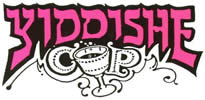THE YIDDISHE CUP METHOD
I’ve sent out two versions of Yiddishe Cup on a single night. Not often. It’s hardly worth the logistical contortions: Yiddishe Cup does mitosis. I name the groups the A Band and the B Band.
Probably should go with the red unit and blue unit, like Ringling Bros. and Barnum & Bailey does, so there are no bruised egos. I’m fortunate, I always wind up in the A band.
I tell my customers up front what the story is. I say, “We’re booked but if you really want us I might be able to pull it off.” Then I try to steer them to another band, but if they keep insisting, I’ll do the B Band routine.
I didn’t try the A and B band maneuver until I was 15 years into the biz and had a full stable of subs who knew the Yiddishe Cup Method.
Repeat: Don’t play the A/B game without being very experienced and upfront. If you’re a liar, you’ll encounter what the New York boys call a “screamer” gig. That’s when the mom is screaming, “Where’s your bandleader? I didn’t hire this band!”
When we do A/B gigs, “Stratton” is at both gigs. The B Band is led by Alice Stratton, my wife, an expert dance leader.

1 comment
I got my start as a professional musician due to the A/B band phenomenon. There was only one big band in Wheeling, West Virginia in 1981, when I was in high school. When the leader double booked I’d get called in to play either piano or bass. I could read the charts just fine, but didn’t know all the little interstitial tunes the leader would play with the rhythm section in between the charts. It’s easier to play piano with the basist calling changes than the other way around.
Later in high school, I started subbing in the one really good jazz combo in town when the bassist or guitarist had to play for the house band at the Jamboree USA. The Jamboree was a country music show in Wheeling that was broadcast on the radio great distances. The broadcast made it to Brooklyn and helped get Andy Statman interested in American roots music.
Leave a Comment